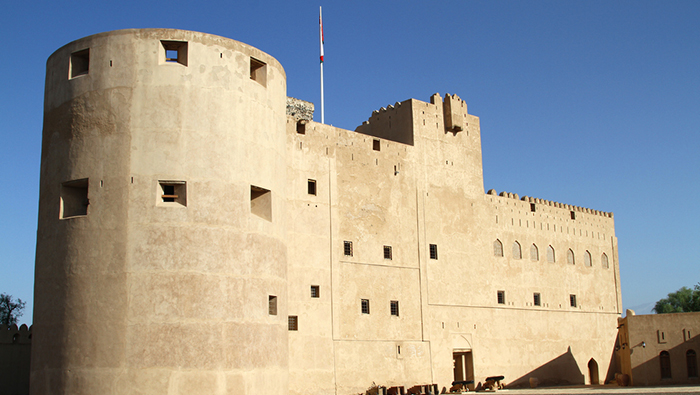

Muscat: The Ministry of Heritage and Tourism is implementing a number of projects that aims at preserving the handicrafts heritage, which is considered as a part of the national treasure and one of the most important pillars of preserving the Omani identity.
The implementation of these projects stems from the value added of the handicraft heritage for the tourism sector.
Alia Salim Al Hinai, Director of the Craft Heritage Department at the Ministry of Heritage and Tourism, said: “The handicraft heritage is everything that has historical, cultural and social importance, and inherited through generations, including the handicraft products, their elements, the associated moral, utilitarian or aesthetic value such as knowledge, skills and techniques."
"It also includes environments for practicing crafts with machines, equipment and sites of extraction of raw materials for creating crafts in their various industries such as wood, which includes the manufacture of ships and boats, silverware, daggers, ornaments, copper and metals, as well as leather industries, pottery, ceramics, palm fronds, the distillation of aromatic plants, incense, stone, gypsum and bone industries, musical instruments, fishing tools, cotton and woolen fabric, paints and dye."
She added that the ministry is interested in all matters related to the craft heritage in a way that ensures its collection and documenting, good managing, protection, and transmitting it toward the future generations. She also affirmed that the Ministry gives a great attention to the research activities in the fields of craft development.
As far as registering crafts at UNESCO as an intangible heritage is concerned, Alia Al Hinai explained that protecting national crafts is one of the competences of the ministry.
She added: “In this context, the Omani dagger -Al Khanjar- was recently inscribed on UNESCO’s list of Intangible Cultural Heritage, within the craft skills and social practices associated with it. At the same time, a number of files were submitted to the Ministry of Sports, Culture and Youth, as it is the competent authority for coordinating with UNESCO”.
She pointed out that the Ministry of Heritage and Tourism is implementing a number of projects related to craft heritage, including the innovative project of the Omani mortar product “Sarooj”, which is a collaborative initiative launched in cooperation between the Industrial Innovation Centre and the Ministry of Heritage and Tourism.
This project aims at developing the process of producing Omani Sarooj, in accordance with the high standards and quality.
The project has been completed and officially launched along with its brand. Meanwhile, a cooperation agreement was signed with Oman Cement Company to produce this innovative product commercially, where the Ministry will have a share. The ministry strives to make the product available in the markets by the end of 2023.
Moreover, there is a project for cultivating green cotton, which is a name for Omani cotton (the Omani seed), which was previously cultivated in Oman a long time ago. It is the cotton from which the Soharian and other textiles were woven in the wilayats of the Sultanate of Oman.
The cultivation of this type of cotton spread in most of the governorates of the Sultanate of Oman, while specific wilayats were famous for their abundant production of green cotton, including the Wilayat of Sumail in the Governorate of Al Dakhiliyah and the Wilayat of Al Mudhaibi in the Governorate of North Al Sharqiyah.
She clarified that an agreement was signed with a house of expertise (the Academy of Industrial Innovation) on 1/6/2023, to implement the project under the supervision of the competent department in the Ministry of Heritage and Tourism, at an estimated cost of OMR30,000. Work is now underway in the first phase of the project.
She pointed out that, there is also a study for the investment of leather in the Sultanate of Oman.
This project aims at developing a mechanism to activate the slaughterhouses with the highest efficiency to benefit from the leather by activating the previously existing assets (the tannery of the south in Dhofar, and the Masran factory in Al Buraimi).
This, she explained, will be done through devising a mechanism in cooperation with the competent authorities.
The studies carried out by the Ministry also work to maximise the economic benefit of crafts, though identifying investment opportunities and utilising them in cooperation with the authorities concerned.
Alia Al Hinai emphasised that the ministry is exerting efforts to support the craft heritage by assisting artisans, implementing studies and inventorying the crafts carried out by the ministry, coming up with recommendations and proposals and coordinating with the Authority for Small and Medium Enterprises Development to prepare programs that will strengthen the craft sector.
It is worth noting that the Ministry of Heritage and Tourism is also working on documenting handicraft industries through a number of publications, including the monthly bulleting titled “Treasures of Craftsmanship Series”. -ONA